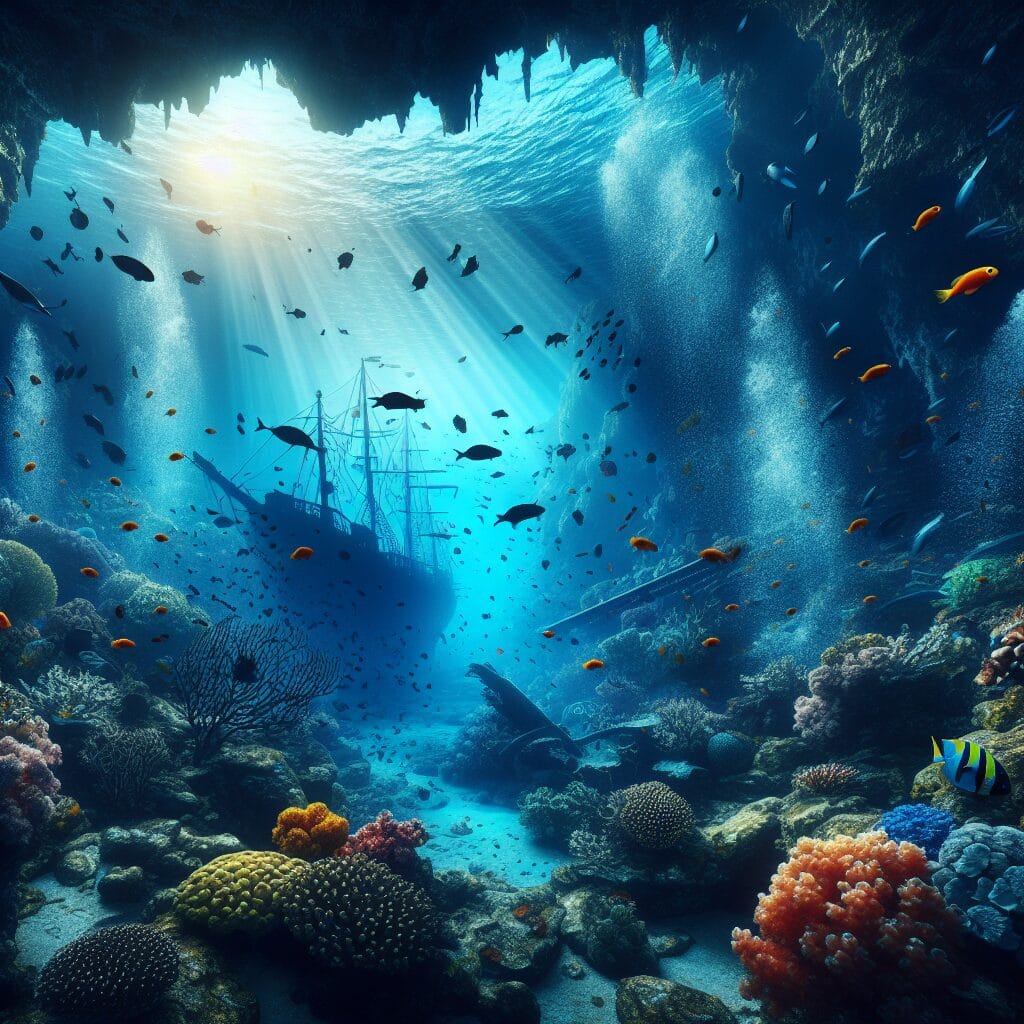Exploring Abandoned Places Around the World is an exciting endeavor that allows adventurous individuals to uncover the hidden stories and forgotten histories of once-thriving locations. The term “abandoned places” refers to structures or areas that have been deserted or left behind, often due to economic decline, natural disasters, or social reasons. These forgotten sites hold a certain mystique and allure, offering a glimpse into another time and a sense of intrigue for those who dare to venture within their decaying walls.
One of the unique aspects of exploring abandoned places is the impact it has on our understanding of history and culture. These forgotten spaces provide a tangible link to the past, allowing us to immerse ourselves in the remnants of previous eras. From crumbling castles to deserted ghost towns, each abandoned place tells a story of its own, shedding light on the lives and experiences of those who once inhabited these now desolate areas. Explorers can witness the effects of time and decay firsthand, serving as a constant reminder of the impermanence of human existence.
In the coming sections of this article, we will delve into the key takeaways of exploring abandoned places around the world. We will discuss the safety precautions one must take while embarking on such adventures, the legalities surrounding access to these sites, and the importance of respecting the history and integrity of these abandoned spaces. Furthermore, we will explore the emotions and experiences that arise from stepping into the remnants of a forgotten world, along with the ethical considerations that go hand in hand with documenting and sharing these finds with others. So, fasten your seatbelts, for we are about to embark on a thrilling journey through the lost and forsaken places of our world.
Key Takeaways
1. Abandoned places offer a unique opportunity to explore forgotten history and experience a sense of mystery and adventure.
2. Many abandoned places have a haunting beauty, with nature reclaiming the spaces and creating stunning juxtapositions between decay and growth.
3. Exploring abandoned places can be dangerous, and it is crucial to prioritize safety by obtaining permission, wearing appropriate gear, and being aware of potential hazards.
4. The reasons behind the abandonment of places range from economic decline and natural disasters to war and social upheaval, highlighting the complex narratives hidden within these forgotten spaces.
5. Abandoned places have a profound impact on local communities and often become sites for urban exploration, artistic expression, and historical preservation efforts.
What are the Best Tips for Exploring Abandoned Places Around the World?
1. Researching Abandoned Places
Before embarking on your exploration of abandoned places around the world, it’s crucial to conduct thorough research. Use online platforms, forums, and social media groups to find information about various abandoned sites. Look for details such as the location, history, accessibility, and any legal restrictions that may apply.
2. Safety Precautions
Exploring abandoned places can be fascinating, but it’s important to prioritize safety. Always wear appropriate gear, including sturdy shoes and a hard hat. Carry a first aid kit and ensure you have a flashlight and extra batteries. It’s also advisable to explore with a group or inform someone about your plans.
3. Respect the Environment
When exploring abandoned places, it’s crucial to respect the environment and the history of the site. Avoid causing any damage or vandalism, as these places often hold cultural or historical significance. Take only photographs and leave no trace behind, preserving the integrity of these abandoned locations.
4. Capture the Atmosphere
Abandoned places offer unique photography opportunities. Take your time to capture the atmosphere and essence of the site through your camera lens. Experiment with different angles, lighting, and perspectives to truly convey the abandoned beauty of these places.
5. Be Mindful of Legalities
While abandoned places might seem exciting to explore, it’s crucial to be aware of any legal restrictions or permissions required. Some locations may be privately owned or protected by authorities. Always obtain proper permissions or permits before entering any site to avoid legal issues.
6. Seek Local Guidance
When exploring abandoned places in different countries or regions, it’s beneficial to seek local guidance. Locals often have insider knowledge about hidden gems and lesser-known sites. Engaging with local communities, tour guides, or urban exploration groups can enhance your experience and ensure you discover the best abandoned locations.
7. Practice Responsible Tourism
As an explorer of abandoned places, it’s essential to practice responsible tourism. Respect the privacy and boundaries of local communities by not divulging sensitive information about locations. Share your experiences responsibly online to prevent overcrowding or disturbances at these fragile sites.
8. Stay Focused and Alert
While exploring abandoned places, it’s important to stay focused and maintain situational awareness. Watch out for uneven surfaces, unstable structures, or potential hazards. Pay attention to your surroundings and trust your instincts for a safe and enjoyable experience.
9. Be Prepared for the Unexpected
When exploring abandoned places, always be prepared for unexpected situations. Carry a fully charged phone, extra water, and snacks. Familiarize yourself with the local emergency contact numbers and know the nearest medical facilities in case of any unforeseen incidents.
10. Leave No Trace
Lastly, one of the golden rules of exploring abandoned places is to leave no trace. Avoid littering, removing objects, or disturbing the natural setting. By leaving the site as you found it, you ensure that future explorers can also enjoy the beauty and mystery of these abandoned places.
Explore Abandoned Places Responsibly!
FAQ: Exploring Abandoned Places Around the World
1. Are abandoned places safe to explore?
While exploring abandoned places can be exciting, it is essential to prioritize safety. Abandoned buildings may pose various risks such as collapsing structures, hazardous materials, or illegal activities. It is advisable to research and assess the specific location beforehand, wear appropriate protective gear, and consider joining guided tours if available.
2. Is it legal to explore abandoned places?
The legality of exploring abandoned places varies depending on the jurisdiction and property ownership. In some countries, trespassing laws may apply, while in others, urban exploration may be regulated. It is crucial to understand and follow the local laws, seek permission when necessary, and respect private property.
3. What equipment should I bring when exploring abandoned places?
When exploring abandoned places, it is advisable to have essential equipment such as a flashlight, sturdy footwear, gloves, and a first aid kit. Additional items like a camera, extra batteries, a notepad, and a respirator may come in handy for documenting and personal safety in potentially hazardous environments.
4. How can I find information about abandoned places in different countries?
There are various resources available to discover abandoned places worldwide, such as online forums, dedicated websites, books, and documentaries. Additionally, joining urban exploration communities and interacting with fellow enthusiasts can provide valuable insights and recommendations for places to explore.
5. What are the ethical considerations when exploring abandoned places?
Respecting the history and integrity of abandoned places is crucial. Avoid damaging or removing any items, graffiti, or leaving behind trash. It is essential to appreciate these places as historical artifacts and preserve their integrity for other explorers and future generations.
6. How can I ensure my personal safety while exploring abandoned places?
Prioritizing personal safety is paramount when exploring abandoned places. It is recommended to wear appropriate clothing and footwear, be aware of your surroundings, avoid entering structurally unsound areas, and always have a means of communication. Additionally, exploring with a friend or joining organized tours can enhance safety.
7. Can I take photographs or videos inside abandoned places?
In general, photography is allowed in abandoned places unless explicitly prohibited by signs or regulations. Capturing the atmosphere and unique aspects of these spaces can be incredibly rewarding. However, it is essential to respect any restrictions, avoid divulging sensitive locations, and be mindful of the privacy of others.
8. Are there any health risks associated with exploring abandoned places?
Exploring abandoned places may expose individuals to health risks such as asbestos, mold, or other contaminants. It is crucial to be aware of potential hazards, wear appropriate protective gear, and take necessary precautions. If you encounter any unusual smells, substances, or experience health issues afterward, seek medical advice promptly.
9. Can children or teenagers explore abandoned places?
Exploring abandoned places can involve various risks, and it is best suited for responsible individuals who can understand and adhere to safety measures. Parents or legal guardians should carefully assess these risks and determine whether it is appropriate for children or teenagers to participate, always prioritizing their well-being.
10. Are there any abandoned places that should be avoided?
Some abandoned places may be especially dangerous, volatile, or pose legal issues, making them best to avoid. These locations can include active industrial sites, areas with unstable structures, restricted military areas, or private properties without explicit permission. Researching and using common sense are essential to avoid unnecessary risks.
Final Thoughts on Exploring Abandoned Places Around the World
Exploring abandoned places around the world offers a remarkable opportunity to delve into the mysteries of human history and observe the beauty in deterioration. It allows us to experience a sense of adventure and curiosity while seeking to understand the stories behind these forgotten spaces. However, it is crucial to approach this hobby responsibly, respecting the locations, their history, and the laws that govern them. By doing so, we can ensure the preservation of these significant remnants of the past for future generations to appreciate.
Remember, urban exploration is not just about capturing extraordinary photographs or finding hidden treasures; it is also about cherishing the cultural heritage and the memories that these abandoned places hold. So, while venturing into this captivating world, let us always prioritize safety, respect, and the long-lasting preservation of these forgotten wonders.









